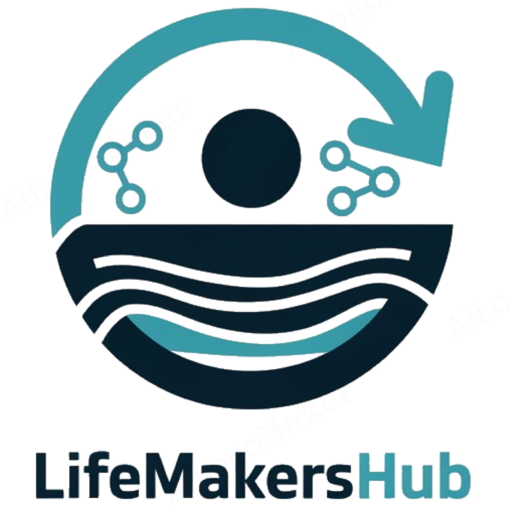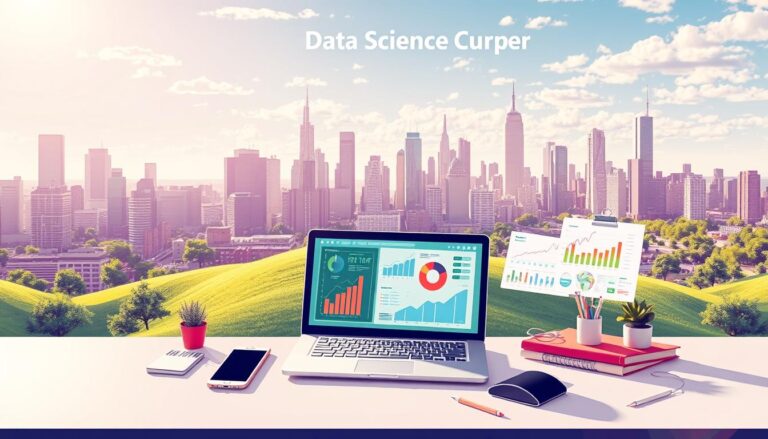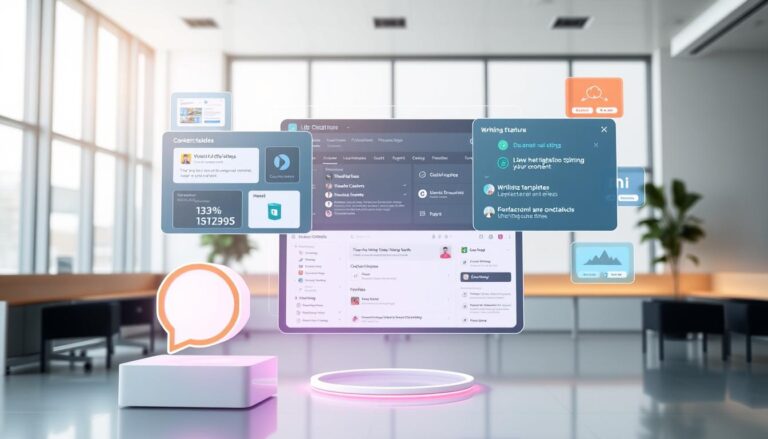Software Development Secrets: Elevate Your Skills
Are you ready to take your coding skills to the next level? Whether you’re a seasoned professional or just starting out, mastering the art of creating efficient and reliable systems is crucial. This article is designed to help you uncover insider secrets that can transform your approach to programming.
We’ll explore practical tips, best practices, and expert insights to help you navigate the complexities of modern technology. From understanding the latest methodologies to optimizing your workflow, you’ll gain valuable knowledge that can set you apart in a competitive field.
With trends like AI-assisted coding and continuous integration shaping the industry, staying ahead requires more than just technical skills. It’s about adopting a mindset of continuous learning and improvement. Let’s dive in and discover how you can elevate your craft and achieve your goals.
Key Takeaways
- Learn practical tips to enhance your coding efficiency.
- Understand the latest methodologies in the industry.
- Discover how AI-assisted coding can streamline your workflow.
- Gain insights into optimizing your development process.
- Adopt a mindset of continuous learning and improvement.
Introduction to the World of Software Development
Ever wondered how technology shapes the world around us? From the apps on your phone to the systems running businesses, it’s all powered by well-designed solutions. This field is not just about writing code—it’s about solving problems and creating tools that make life easier.
In today’s digital age, businesses and individuals rely heavily on technology. Whether it’s managing data, automating tasks, or enhancing user experiences, the demand for skilled professionals is higher than ever. The U.S. Bureau of Labor Statistics projects a 26% growth in roles like software engineers by 2033, making this a promising career path.
Modern methodologies like continuous integration and AI-assisted coding are transforming how we build systems. These approaches streamline workflows, reduce errors, and deliver faster results. By mastering these techniques, you can stay ahead in a competitive field.
Why Master Software Development?
Creating efficient systems isn’t just a skill—it’s a necessity. Here’s why:
- Career Growth: With a median salary of $132,270, this field offers financial stability and upward mobility.
- Problem Solving: You’ll tackle real-world challenges, from designing user-friendly interfaces to optimizing performance.
- Innovation: Be at the forefront of emerging technologies like AI and cloud-native solutions.
Overview of the Ultimate Guide
This guide is your roadmap to mastering the craft. We’ll cover:
- The fundamentals of building reliable systems.
- Key roles and collaboration in modern projects.
- Essential methodologies and tools to enhance your workflow.
“The only way to do great work is to love what you do.”
Whether you’re a beginner or a seasoned professional, this guide will provide actionable insights to elevate your skills. Let’s dive in and explore the exciting world of creating efficient systems!
Defining Software Development and Its Impact
Have you ever thought about how systems are built to solve real-world problems? It’s a step-by-step process that transforms ideas into functional tools. This process, known as software development, is the backbone of modern technology.
At its core, software development involves designing, creating, testing, and maintaining applications. It’s independent of hardware, meaning it can run on various devices. This flexibility makes it a powerful solution for businesses and individuals alike.
The Fundamentals and Key Concepts
Understanding the basics is crucial. Here are some key concepts:
- SDLC (Software Development Life Cycle): A structured approach that includes planning, analysis, design, implementation, testing, deployment, and maintenance.
- Requirements Analysis: Identifying what the system needs to do to meet user expectations.
- System Design: Creating a blueprint for how the application will function.
These steps ensure that the final product is both efficient and reliable. For example, system software like operating systems and application software like mobile apps are built using these principles.
Quality assurance and testing are critical. They help identify and fix issues before the product reaches the user. This ensures a seamless experience and builds trust.
| Stage | Purpose |
|---|---|
| Planning | Define goals and scope |
| Analysis | Understand user needs |
| Design | Create system blueprint |
| Testing | Ensure quality and functionality |
By mastering these fundamentals, you can create solutions that make a real impact. Whether it’s a consumer app or a business system, the principles remain the same.
The Role of Developers, Engineers, and Programmers
Behind every great system is a team of skilled professionals working together. Each role—programmer, developer, and engineer—plays a unique part in bringing ideas to life. Understanding these roles can help you navigate your career path and contribute effectively to projects.
Comparing Key Roles in the Industry
While the terms are often used interchangeably, programmers, developers, and engineers have distinct responsibilities. Here’s a breakdown:
- Programmers: Focus on writing and debugging code. They turn designs into functional programs using languages like Python or Java.
- Developers: Handle the entire creation process, from design to testing. They ensure the final product meets user needs.
- Engineers: Apply engineering principles to build scalable and efficient systems. They often oversee complex projects and mentor junior team members.
Each role requires a unique set of skills, but collaboration is key to success.
Team Collaboration in Modern Projects
In today’s fast-paced tech world, teamwork is essential. The DevOps model, for example, bridges the gap between developers and IT operations. This approach emphasizes:
- Communication: Sharing ideas and feedback to solve problems faster.
- Shared Expertise: Leveraging each team member’s strengths to achieve common goals.
- Automation: Streamlining workflows to save time and reduce errors.
Real-world examples, like cross-functional teams at leading tech companies, show how collaboration accelerates project delivery. By working together, teams can overcome complex challenges and deliver high-quality solutions.
“Alone we can do so little; together we can do so much.”
Whether you’re a programmer, developer, or engineer, embracing teamwork can elevate your career. Focus on building strong relationships, learning from others, and contributing to shared goals. The future of technology depends on it.
Software Development Lifecycle Essentials

What does it take to build a successful software system from start to finish? The answer lies in understanding the software development lifecycle (SDLC). This structured process ensures that every project meets user needs, business goals, and quality standards. Let’s break it down step by step.
Planning, Analysis, and Design Phases
The journey begins with planning. This phase sets the foundation by defining project goals, timelines, and resources. Studies show that 40% of projects fail due to poor requirements gathering, making this step critical.
Next comes analysis, where teams identify user needs and system requirements. This ensures the final product solves real problems. Finally, the design phase creates a blueprint for the system, often using tools like UML or SysML modeling.
- Planning: Define goals, timelines, and resources.
- Analysis: Understand user needs and system requirements.
- Design: Create a blueprint for the system.
Implementation, Testing, and Deployment
Once the design is ready, the implementation phase begins. Teams write code, integrate pre-existing modules, and complete tasks efficiently. Did you know that integrating modules can reduce development time by up to 50%?
Testing is where quality assurance shines. Automated testing can cut testing time by 30%, ensuring robust performance. Finally, deployment involves packaging the system and configuring environments. Strategies like continuous delivery and infrastructure as code (IaC) streamline this process.
“Quality is not an act, it is a habit.”
- Implementation: Write code and integrate modules.
- Testing: Ensure quality and functionality.
- Deployment: Package and configure the system.
By following these steps, teams can deliver high-quality solutions that meet user needs and business goals. The SDLC isn’t just a process—it’s a roadmap to success.
Navigating Different Software Development Models
Choosing the right approach can make or break your project. With so many methodologies available, understanding their strengths and weaknesses is crucial. Let’s explore the most popular models and how they can fit your needs.
Waterfall and V-Shaped Approaches
The Waterfall model is a linear and sequential approach. Each phase must be completed before the next begins. This works well for projects with clear requirements but can struggle with changes. Testing occurs late, which can lead to undiscovered issues.
The V-shaped model emphasizes testing at every stage. Each development phase has a corresponding testing phase. This ensures early defect detection but can be rigid and costly for complex projects.
Agile, DevOps, Iterative, and Spiral Models
Agile focuses on flexibility and collaboration. It delivers working solutions in short cycles, allowing for quick adjustments. This is ideal for projects with evolving requirements but can make timeline estimation challenging.
DevOps bridges the gap between development and IT operations. It emphasizes continuous integration and delivery, streamlining workflows and reducing errors. This approach is perfect for teams aiming for faster releases.
The Iterative model involves repeated cycles of development. Each iteration builds on the previous one, allowing for continuous improvement. This is great for large projects but requires significant resources.
The Spiral model combines iterative and linear approaches. It focuses on risk assessment and is suitable for complex, high-stakes projects. However, the number of iterations isn’t predetermined, which can extend timelines.
“The right methodology depends on your project’s goals, team, and constraints.”
Each model has its place. Understanding their benefits and challenges will help you choose the best fit for your project. Whether you need structure or flexibility, there’s a methodology designed to meet your needs.
Embracing Key Programming Methodologies & Tools
How can modern tools transform the way we build applications? The answer lies in adopting innovative methodologies like low-code/no-code platforms and cloud-native development. These approaches are reshaping the industry, making it easier for businesses and beginners to create efficient solutions.
Low-Code and No-Code Platforms
Low-code and no-code platforms are revolutionizing how applications are built. These tools allow users to create functional programs with minimal coding. They’re perfect for businesses that need quick solutions or beginners who want to learn without diving deep into complex languages.
Benefits include:
- Faster Development: Reduce time-to-market by up to 50%.
- Accessibility: Enable non-technical users to contribute to projects.
- Cost Efficiency: Lower expenses by reducing the need for extensive coding expertise.
Cloud-Native Development
Cloud-native development focuses on building scalable and resilient applications. It leverages microservices and containerization to ensure flexibility and efficiency. This approach is ideal for businesses aiming to handle large-scale operations seamlessly.
Key advantages:
- Scalability: Easily adjust resources based on demand.
- Resilience: Ensure high availability and fault tolerance.
- Innovation: Foster creativity by simplifying complex processes.
Popular tools like Kubernetes and Docker are leading the way in cloud-native solutions. These platforms streamline workflows and enhance productivity, making them essential for modern developers.
“The right tools can turn challenges into opportunities.”
| Tool | Purpose |
|---|---|
| Kubernetes | Container orchestration |
| Docker | Containerization |
| Mendix | Low-code development |
| OutSystems | No-code platform |
Integrating these methodologies into your workflow can boost efficiency and innovation. Start by identifying your project’s needs and experimenting with these tools. The future of programming is here—embrace it!
Integrating Generative AI into Coding and Testing
How can AI transform the way you write and test code? Generative AI is revolutionizing the tech world by automating repetitive tasks and enhancing productivity. From suggesting the next lines of code to detecting bugs faster, AI-powered tools are becoming indispensable for developers.
Benefits of AI-Powered Code Generation
Generative AI tools analyze the context of your code and suggest the next steps, speeding up the development process. This not only saves time but also reduces the likelihood of errors. For example, platforms like GitHub Copilot and OpenAI Codex provide real-time assistance, making coding more efficient.
Another major advantage is quicker bug detection. AI can pinpoint issues in your code that might be missed during manual reviews. Automated testing is another area where AI shines, ensuring higher quality and reliability in the final product.
Integrating AI into the CI/CD pipeline improves overall software quality. By automating routine tasks, developers can focus on solving complex problems and delivering innovative solutions. This synergy between human expertise and AI assistance leads to better outcomes.
“AI is not here to replace developers but to empower them to achieve more.”
Here are some examples of AI-powered tools currently in use:
- GitHub Copilot: Suggests code completions and minimizes manual coding.
- OpenAI Codex: Translates natural language prompts into code snippets for rapid prototyping.
- Microsoft Research Tools: Enhance developer workflows through real-time assistance.
By leveraging these tools, developers can streamline their workflows, reduce errors, and deliver high-quality solutions faster. The future of coding is here—embrace it!
Leveraging DevOps for Continuous Integration and Delivery
What if you could release updates faster without compromising quality? DevOps makes this possible by bridging the gap between developers and IT operations. It’s a game-changer for teams aiming to deliver high-quality solutions quickly and efficiently.
At its core, DevOps emphasizes collaboration, automation, and continuous improvement. By integrating these principles, teams can streamline workflows and reduce errors. The result? Faster releases, better quality, and happier users.
Streamlining Workflows and Automation
DevOps relies heavily on automation to speed up processes. Continuous Integration (CI) ensures that code changes are merged frequently, reducing integration issues. Continuous Delivery (CD) automates deployment, allowing teams to release updates quickly and reliably.
Here’s how DevOps transforms workflows:
- Faster Releases: Automated pipelines cut deployment cycles by up to 30%, enabling quicker feature releases.
- Improved Quality: Automated testing catches bugs early, ensuring robust performance.
- Cost Efficiency: Cloud automation reduces infrastructure costs by up to 40%.
Real-world examples show the impact of DevOps. Companies like Netflix and Amazon use these practices to deliver updates seamlessly, minimizing downtime and maximizing user satisfaction.
“DevOps isn’t just a methodology—it’s a culture of collaboration and continuous improvement.”
Here’s a breakdown of key DevOps tools and their roles:
| Tool | Purpose |
|---|---|
| Jenkins | Automates CI/CD pipelines |
| Docker | Containerization for consistent environments |
| Kubernetes | Manages containerized applications at scale |
| Terraform | Automates infrastructure setup |
By adopting DevOps, teams can focus on solving complex problems instead of managing repetitive tasks. It’s not just about speed—it’s about delivering value to users consistently. Start integrating these practices today and see the difference it makes in your projects.
Exploring Various Types of Software and Applications
Have you ever considered the different types of tools that power your digital experiences? From the operating system on your computer to the apps on your phone, each plays a unique role in making technology work seamlessly. Understanding these categories can help you make informed decisions in your projects.
System Software Versus Application Software
System software is the backbone of any computing device. It includes operating systems like Windows, macOS, and Linux, which manage hardware resources and provide a platform for other programs to run. Utilities like antivirus programs and disk cleanup tools also fall into this category, ensuring your system runs smoothly.
On the other hand, application software is designed for specific tasks. Examples include Microsoft Office for productivity, Adobe Photoshop for graphic design, and WhatsApp for communication. These programs are built to meet user needs directly, making them essential for both personal and business use.
Programming Software and Its Tools
Programming software is the toolkit for developers. It includes code editors like Visual Studio Code, debuggers for identifying errors, and compilers for converting code into executable programs. These tools streamline the coding process, making it easier to build high-quality applications.
Choosing the right tools is critical. For instance, a debugger can save hours by pinpointing issues in your code, while a code editor with extensions can enhance productivity. The right combination ensures efficiency and quality in your work.
“The right tools don’t just make the job easier—they make it possible.”
Here’s a quick comparison of the three categories:
- System Software: Manages hardware and provides a platform (e.g., Windows, macOS).
- Application Software: Performs specific tasks (e.g., Microsoft Word, Photoshop).
- Programming Software: Assists in coding and debugging (e.g., Visual Studio Code, Git).
By understanding these differences, you can select the right tools for your needs and improve your workflow. Whether you’re managing a system, building an app, or writing code, the right software makes all the difference.
Mastering Software Development: Best Practices and Strategies

What separates good software from great software? It’s the commitment to quality and user-focused design. Building reliable solutions isn’t just about writing code—it’s about solving real problems for users. By adopting proven strategies, you can ensure your projects meet high standards and deliver value.
Quality Assurance and User-Centered Design
Quality assurance (QA) is the backbone of any successful project. Rigorous testing ensures that your software performs as expected and meets user needs. Did you know that 80% of vulnerabilities are introduced during the development phase? This highlights the importance of integrating QA early in the process.
User-centered design is equally critical. By involving users in the design process, you can create solutions that truly address their needs. Early feedback helps identify potential issues before they become costly problems. This approach not only improves usability but also boosts user satisfaction.
Here are some proven strategies to maintain high-quality software:
- Continuous Testing: Automate testing to catch bugs early and reduce manual effort.
- Iterative Reviews: Regularly review code to identify and fix issues before deployment.
- User Feedback Loops: Engage users throughout the project to ensure alignment with their expectations.
Adopting a holistic approach that combines QA and design thinking can lead to better outcomes. For example, companies that prioritize user feedback report a 45% increase in user satisfaction. This shows how focusing on quality and user needs can drive success.
“Quality is not an act, it is a habit. Build it into every step of your process.”
Preventing bugs and addressing issues requires a proactive mindset. Tools like automated testing frameworks and CI/CD pipelines can streamline workflows and improve reliability. By combining these tools with a focus on user needs, you can create software that stands out in a competitive market.
Remember, the goal isn’t just to deliver a product—it’s to deliver a solution that solves real problems. By mastering these best practices, you can ensure your software is both high-quality and user-focused.
Career Opportunities and Future Trends in Software Development
What does the future hold for those in the tech industry? With rapid advancements in technology, the demand for skilled professionals is soaring. The U.S. Bureau of Labor Statistics projects a 25% growth in roles like software developers and engineers by 2031. This makes it an exciting time to build a career in this field.
Emerging technologies like AI, cloud computing, and DevOps are reshaping the landscape. These innovations are not just trends—they’re becoming essential tools for solving complex problems. By staying updated, you can position yourself for success in a competitive market.
In-Demand Roles and Emerging Technologies
The tech industry is evolving, and so are the roles within it. Here are some of the most sought-after positions:
- AI Engineers: Specialize in building intelligent systems and machine learning models.
- Cloud Architects: Design and manage scalable cloud-based solutions.
- DevOps Engineers: Bridge the gap between development and IT operations for seamless workflows.
These roles require a mix of technical expertise and problem-solving skills. For example, AI engineers need proficiency in Python and TensorFlow, while cloud architects must master platforms like AWS and Azure.
Skills for a Dynamic Digital Future
To thrive in this fast-paced industry, continuous learning is key. Here are some essential skills to focus on:
- Programming Languages: Python, Java, and JavaScript remain highly relevant.
- Cloud Computing: Understanding platforms like AWS and Google Cloud is crucial.
- Automation: Tools like Jenkins and Kubernetes streamline workflows.
Future trends like low-code platforms and ethical AI practices are also worth exploring. These innovations simplify processes and ensure responsible use of technology.
“The only way to predict the future is to create it. Stay curious, keep learning, and embrace change.”
By mastering these skills and staying adaptable, you can future-proof your career. The tech industry offers endless opportunities—seize them by staying ahead of the curve.
Conclusion
As we wrap up, let’s revisit the key takeaways to ensure you’re equipped for success. Mastering the fundamentals of software development is crucial, whether you’re optimizing workflows or embracing emerging trends like AI and cloud-native solutions. Continuous learning and adherence to proven strategies will keep you ahead in this dynamic field.
Throughout this guide, we’ve explored actionable insights—from understanding methodologies like Agile and DevOps to leveraging tools for efficient coding and testing. These practices not only enhance productivity but also ensure high-quality results that meet user needs.
Thank you for following along. We encourage you to dive deeper into these topics and stay updated with industry trends. Subscribe, comment, or follow us for more in-depth guides and updates.
Remember, the journey of a developer is one of growth and innovation. Take the next step, embrace challenges, and continue building solutions that make a difference. The future of technology is in your hands—shape it with confidence!
FAQ
What is the importance of mastering software development?
What are the key roles in software development?
What is the software development lifecycle?
What are the differences between Waterfall and Agile models?
How does generative AI impact coding and testing?
What is DevOps, and why is it important?
What are the different types of software?
What are the best practices in software development?
What career opportunities are available in software development?
What skills are essential for a future in software development?
Source Links
- Want to Get Promoted? The Software Developer’s Secret Weapon for Advancing in Your Career.
- 9 Smart Ways To Stand Out In A World Full Of Coders · theSeniorDev
- Software Development | Introduction, SDLC, Roadmap, Courses – GeeksforGeeks
- What Is a Software Developer? | Skills and Career Paths
- What Is Software Development? | IBM
- What is Software Development? – GeeksforGeeks
- Understanding the Software Development Process | BrowserStack
- Software Developer vs. Software Engineer: Differences + More
- Difference Between Software Developer and Software Engineer
- What is SDLC? – Software Development Lifecycle Explained – AWS
- Software Development Life Cycle (SDLC) – GeeksforGeeks
- SDLC Best Practices: 10 Essentials for Software Development Success
- Top 8 Software Development Life Cycle (SDLC) Models used in Industry – GeeksforGeeks
- Navigating Software Development Models: Basic Guide
- Embracing Agile Methodologies for Rapid Software Development
- The Future of Programming: Embracing AI and Machine Learning in Software Development
- Top 6 Software Development Methodologies & When to Use Them
- 10 ways GenAI improves software development
- Integrating Generative AI into Software Development
- How IT Companies Can Leverage DevOps for Faster Software Delivery
- The Rise of DevOps: Integrating Development and Operations for Seamless Software Delivery – FutureCode IT Consulting
- 9 Types of Software Development in 2025
- Application Software: Types and What is Software Basics
- Different Types of Software with Examples – A Complete Guide
- Mastering Your Software Development Strategy: Approaches for Success
- Mastering Software Development Life Cycle SDLC Best Practices for 2025
- Home
- Emerging Software Development Trends
- 5 Software Development Trends in 2025: AI, ML, and Big Data Solutions | Turing
- Introduction to Software Engineering – GeeksforGeeks
- The Power of DevSecOps







